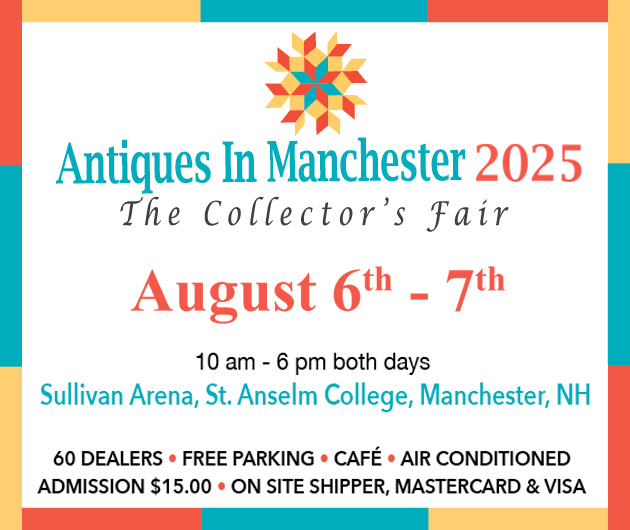Sales Stronger Than Ever at Sixth AD20/21 Show—Finally
March 21st, 2013
|
(From left) AD20/21 2013 Lifetime Achievement Award winner John P. Axelrod; Museum of Fine Arts, Boston curator Nonie Gadsden; and Boston Architectural College President Theodore C. Landsmark. For many years, Axelrod has had a close association with the MFA, Boston, acting as an overseer and donor. The Art of the Americas wing has a John P. Axelrod Gallery that highlights American decorative arts and fine art of the 1920’s through mid-1940’s. Axelrod was one of the first people to recognize the importance of American moderne. He was also one of the first to amass a significant body of American art by African-Americans. He has now given, promised, or turned over to the museum in a gift-purchase arrangement these early collections. Gadsden said Axelrod “pushed” the museum into collecting areas that were unfamiliar to them, “and we are so grateful.” He has been “a visionary in more ways than one,” she said. “Never bet against John,” Gadsden advised. “And if you see him buying something, follow his suit.” Landsmark added that Axelrod “hasn’t been afraid to be ahead of the crowd,” embracing “the high art that sometimes comes from unexpected places.” (See related story about Axelrod’s new collecting interests on page 34-C). Photo by Joni Lohr. Photo courtesy Fusco & Four.
The Grant Richards Trio entertained the 650 attendees at the gala, which raised just over $133,000 for Boston Architectural College. Photo by Joshua Payne. Photo courtesy Fusco & Four.
Ryan Day of AW Massey Fine Art, Fort Lauderdale, Florida, with gala-goer Sunne Savage of Sunne Savage Gallery, Winchester, Massachusetts. They posed with Standing Ada by Alex Katz (b. 1927). The 1987 double-sided screenprint is on a sheet of cut aluminum. AW Massey’s price for the 64 5/8" x 10 1/8" likeness of Katz’s wife was $38,000.
Stephanie Bond and Richard Baiano are co-owners of Boston’s Childs Gallery. Behind them is a Milton Avery painting. At left is a 1948 bronze, Jason (or Jason, Triumph over Tyranny), by Donald De Lue (1897-1988). The bronze was cast prior to 1986. From an edition of 12, it is signed and inscribed on its base and was priced at $35,000.
Susanna J. Fichera of Arlington, Massachusetts, and Bowdoinham, Maine, with husband, Michael W. Mahan (in middle), and show promoter Tony Fusco. Fichera said she sold paintings by John Laurent, William Zorach, and Alexander Brooks, and a small bronze of a mother and children by Canadian artist Sybil Kennedy.
Katie Rowley (on right) and Somers Killian of Machine Age are shown with a gala-goer. On the wall behind them, the 1979 set of six 29" x 29" signed and numbered serigraphs by David Roth (b. 1942) was priced at $7500.
Phillip Jude Miller, owner of America Dural, Cambridge, Massachusetts, specializes in interior design and architectural services. He had never done a show until AD20/21 this year. “It was a good experience and I met really nice people, and hopefully it will flower into something worthwhile,” said Miller, most of whose wares were contemporary and available in a variety of sizes and fabrics. The seating that’s covered with zebra-patterned cow hide, for example, is a contemporary Zac chair that’s available at $1665, if upholstered with the customer’s own material. As shown, it was $3350. The three-seat sofa is a reproduction of a 1950’s design classic by Milo Ray Baughman Jr. Depending on fabric, it is priced at $2300 and up. The white lacquer and chrome Molvedo coffee table is 36" square and priced at $3270 as shown; in other shapes and materials, it is priced commensurately. The 19th-century Japanese bronze Foo dog on the table was tagged $3600. The drop-front desk in faux shagreen and rosewood veneer was $5500. The framed image above the sofa is a photograph by German artist Oliver Boberg (b. 1965), priced at $7500. The 7' x 10' contemporary wool and silk rug was $3400. |
Boston, Massachusetts
“We probably wouldn’t have been crazy enough to try pulling off something like this [show] without the support of BAC,” said promoter Tony Fusco, speaking of Boston Architectural College, beneficiary of the gala that opened the sixth annual AD20/21 on March 21. The show’s subtitle is Art & Design of the 20th & 21st Centuries. The products of these periods have not traditionally been the first choices of Boston’s collecting community. But thanks in part to this show’s bold creators, collectors here have started to come around, and the idea of presenting this material to them no longer seems crazy at all.
Fusco made his remark to a crowd that had assembled to watch John P. Axelrod receive the show’s Lifetime Achievement Award for 2013. The award is given each year to a distinguished member of the design community. Past winners have been designers Vladimir Kagan and Dakota Jackson. Axelrod is not a designer; he is a collector, and the choice made a strong statement, intentional or otherwise. Where would the design community be without collectors?
At this year’s show, as usual, dealers came from great distances to exhibit. There were representatives from Ohio, Illinois, Colorado, Florida, New Mexico, California, and even France. There were also, as usual, a number of New Yorkers. But the majority of booths were filled with New Englanders, especially Bostonians, and I for one count that as a positive. This is a Boston show—the only show of its kind in New England—and locals are the ones who should most want it to thrive.
Thrive it has. “Sales this year were stronger than they have ever been for this show—finally,” said Fusco a few days after closing. He knows exactly what gets sold and for how much because of the security vouchers that every dealer must issue to a buyer. “We launched this show three weeks before Bear Stearns collapsed,” he recounted. “We’ve been slogging through this economy just like everybody else. This year all the right things were in place. The stock market was high. It was a cold weekend but sunny. People had built up cabin fever from all the snow we’ve had. A lot of elements were in place.”
The best part was that a “buying crowd” came, he said. “They were serious. They were handling things. They were focused. The number of people through the door was actually down a little bit from last year. It didn’t make any difference. The sales were way, way higher, and we already know that some dealers have made some significant follow-up sales.”
For several years now, about a dozen print dealers, formerly part of the Boston Print Fair, have been showing alongside the 35 or so dealers who bring art, furniture, and decorative arts to AD20/21. The print dealers “really, really did well,” said Fusco. “The number of security vouchers we had from them was over the top, and in all price ranges.” He cited a Max Beckmann self-portrait with an asking price of $25,000 that sold. He also mentioned prints in the $100 to $200 range.
He partly attributed the print dealers’ success to the launch of a different kind of advertising campaign this year. “We ran separate ads for the print fair in the Boston Globe, and I’m sure that helped, because people were coming specifically for the print fair. I think that really pulled them in.”
AW Massey of Fort Lauderdale and Miami Beach, Florida, was among the print dealers who sold well, including an Alex Katz, offered at $37,000, and an Andy Warhol image of Mick Jagger, signed by artist and by subject, that was marked $42,000.
“The Warhol went to a very good collector,” said Allyson Massey, whose gallery specializes in “all the postwar contemporary artists,” including Jim Dine, Damien Hirst, Tom Wesselman, Mel Bochner, and Jasper Johns, along with Katz and Warhol. Massey doesn’t often do shows, and this was her first one outside of Florida. “We did a satellite show during Art Basel and two back to back in Palm Beach. So we’re very new to this, but we enjoy it very much. The booth in Boston was busy at all times. There was lots of interest.” She added, “We have a Web site, a virtual gallery; we have a global presence; and we ship all over the world.”
Childs Gallery, Martha Richardson Fine Art, Machine Age, and Landry & Arcari Oriental Rugs & Carpeting are Boston businesses that are among the show’s most loyal veterans. Often, they sell well at the show; if not, they invariably have sales that come later. Richard Baiano of Childs Gallery said his gallery sold prints by Édouard and Alberto Giacometti, a painting by Henry Botkin, and a bronze by Donald De Lue. He said, less than a week later “...we’ve already had follow-up…We always have follow-up from the show.”
One thing that is different for Childs this year is that the gallery took a double booth close to the show’s entrance instead of a single one on the side. Besides giving Childs a greater presence and a more immediate one, Baiano said, “It allowed us to show the full breadth of our inventory.”
Since Childs, established in 1937, already has such a strong presence on Boston’s Newbury Street, I asked Baiano how participating in the show differs from day-to-day marketing in the gallery. He said, “We do the show because it gives us an opportunity for a different sort of presentation than we can do in the gallery. In particular, we have used this fair to show our modern material, meaning 1940 to 1970 or 1980.” Acknowledging that most people know the gallery for its more traditional art, he said, “That is changing, and obviously a fair like AD20/21 helps change perceptions as well.”
New entrants from Boston included Sloane Merrill, showing oil paintings by living artists; Gold Gallery, exhibitors of “emerging” and mid-career artists; and Adelson Galleries Boston, whose AD20/21 program description said it was “bridging the gap between fine contemporary and modern artwork in Boston.”
Adelson Galleries Boston is a fledgling, having opened in October 2012 in the South End, not far from the Cyclorama, where AD20/21 takes place. Its director is Adam Adelson, whose gallery might legitimately be nicknamed Adelson Redux, since his father, Warren Adelson, opened his eponymous gallery in a basement on Boston’s Newbury Street in the mid-1960’s. In the 1970’s, Warren moved the business to New York City, where it remains. Adam, a 2012 graduate of Boston University, said his family’s art business inspired him to pursue the same profession.
Many dealers may imagine that father will teach son valuable lessons. These days, it may also be that son will teach father or at least father’s generation. When Adam and I exchanged business cards at the gala, I told him he’d hear from me after the show. He did not wait to be contacted. The next morning, the first official day of the show, I received an “e-mail blast” from him, asking me to subscribe to the gallery’s mailing list. It got my attention and my subscription, and when I clicked a little icon at the bottom of the e-mail blast’s page, it asked me if I wanted to add the gallery to my computer’s address book. I now have Adelson Gallery Boston’s Web site address, gallery address, and e-mail address, all at the ready.
When we did speak on the phone, the younger Adelson, who is 23, said, “I would feel more intimidated [by entering the art business] if my dad hadn’t started when he was twenty-one. Also, I’ve been going to fairs since I was twelve years old, helping my dad with the Winter Antiques Show.”
Still, being the one in charge at a show is a new experience, which he characterized as “fun” and “exciting,” as well as “a great way for me to introduce myself to the Boston art world.” And he did have some success. “From a business standpoint, it was great for networking, because we met art advisors and dealers for whom I have clients for certain pieces, and we even managed to sell a few of the [Harry] Bertoias”—i.e., three flat bronzes and a monotype—“so that was nice.”
The young gallerist named dealer Portia Harcus as one of his mentors here in Boston. “She has known my dad for fifty years and has always been involved in modern art [as opposed to traditional],” he said. “She’s the one who encouraged me to do art fairs, has introduced me to people, and led me in the right direction.”
What’s been “such a pleasant surprise” is that not only family friends but “all the dealers I’ve met here are so friendly,” he went on. “I’m on the board of trustees at the Danforth Museum of Art [Framingham, Massachusetts] and so is Richard Baiano of Childs, and he’s been very supportive of me. All the dealers I meet want to help me. It’s not what I expected, to be honest. I grew up in New York, around that cut-throat environment.” He laughed. “I didn’t think it was going to be as welcoming as it is in Boston.”
For more information, phone (617) 363-0405 or see the Web site (www.AD2021.com).
|
|
|
|
|
|
Originally published in the June 2013 issue of Maine Antique Digest. © 2013 Maine Antique Digest




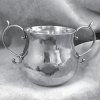
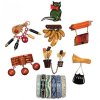

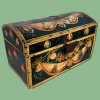

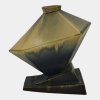


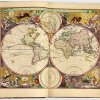






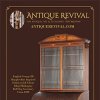
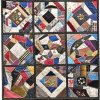




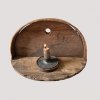





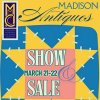










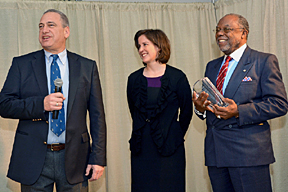
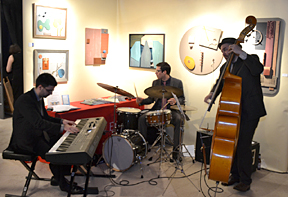

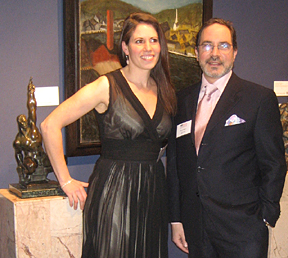
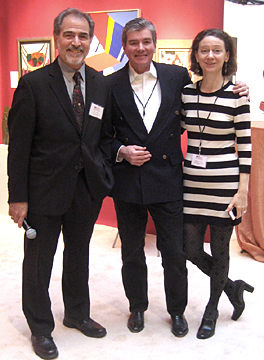
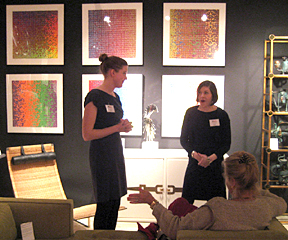
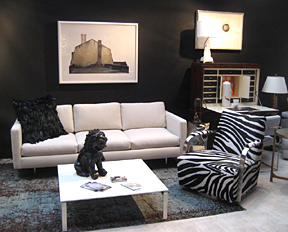
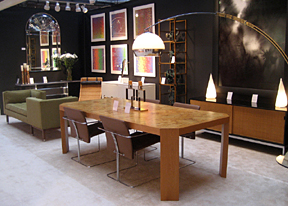 Machine Age, Boston, asked $7500 for this burled ash dining table. Designed in the 1970’s by Vladimir Kagan, it is 29" x 44" x 71¾" including its two leaves. Around it is a set of four dining chairs designed by Saporiti Italia, priced at $5800. The light over the table is a 69" x 69" Arc floor lamp, made in the 1970’s in U.S.A. of marble, steel, and plastic and $2850. Against the back wall is a credenza with rattan doors by Florence Knoll for $8500. The upholstered piece at the other end is a contemporary tête-à-tête, $6950. A custom piece by Machine Age, it was designed after Edward Wormley (1907-1995). The fabric is Knoll Textile’s Cameo line, and the color is called “herb.” For more information about Machine Age’s custom pieces, see its Web site (
Machine Age, Boston, asked $7500 for this burled ash dining table. Designed in the 1970’s by Vladimir Kagan, it is 29" x 44" x 71¾" including its two leaves. Around it is a set of four dining chairs designed by Saporiti Italia, priced at $5800. The light over the table is a 69" x 69" Arc floor lamp, made in the 1970’s in U.S.A. of marble, steel, and plastic and $2850. Against the back wall is a credenza with rattan doors by Florence Knoll for $8500. The upholstered piece at the other end is a contemporary tête-à-tête, $6950. A custom piece by Machine Age, it was designed after Edward Wormley (1907-1995). The fabric is Knoll Textile’s Cameo line, and the color is called “herb.” For more information about Machine Age’s custom pieces, see its Web site (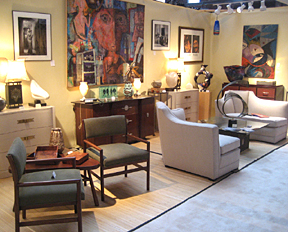 Bridges Over Time asked $4200 for the circa 1949 Hollywood regency sofas upholstered in a cashmere blend (on right). The pair sold. The 1950’s armchairs (on left), designer unknown, are walnut and upholstered in buffalo by Edelman. Price for the pair was $3200. The painting above the sideboard, a 1976 self-portrait by William McCloy, is a mixed media on canvas, marked $6000, and sold.
Bridges Over Time asked $4200 for the circa 1949 Hollywood regency sofas upholstered in a cashmere blend (on right). The pair sold. The 1950’s armchairs (on left), designer unknown, are walnut and upholstered in buffalo by Edelman. Price for the pair was $3200. The painting above the sideboard, a 1976 self-portrait by William McCloy, is a mixed media on canvas, marked $6000, and sold.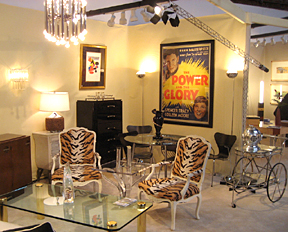 Glen Leroux Antiques, Westport, Connecticut, wanted $3500 for the pair of tiger-upholstered open-arm bergère-style chairs. The black chest on right is by Donald Deskey (1894-1989) and was marked $4800. The glass coffee table with solid brass legs was by Pace; its price was $4200. The movie poster, acquired from the artist’s estate, was $2800. The ice bucket in deep-sea diver’s helmet form was $495.
Glen Leroux Antiques, Westport, Connecticut, wanted $3500 for the pair of tiger-upholstered open-arm bergère-style chairs. The black chest on right is by Donald Deskey (1894-1989) and was marked $4800. The glass coffee table with solid brass legs was by Pace; its price was $4200. The movie poster, acquired from the artist’s estate, was $2800. The ice bucket in deep-sea diver’s helmet form was $495.

